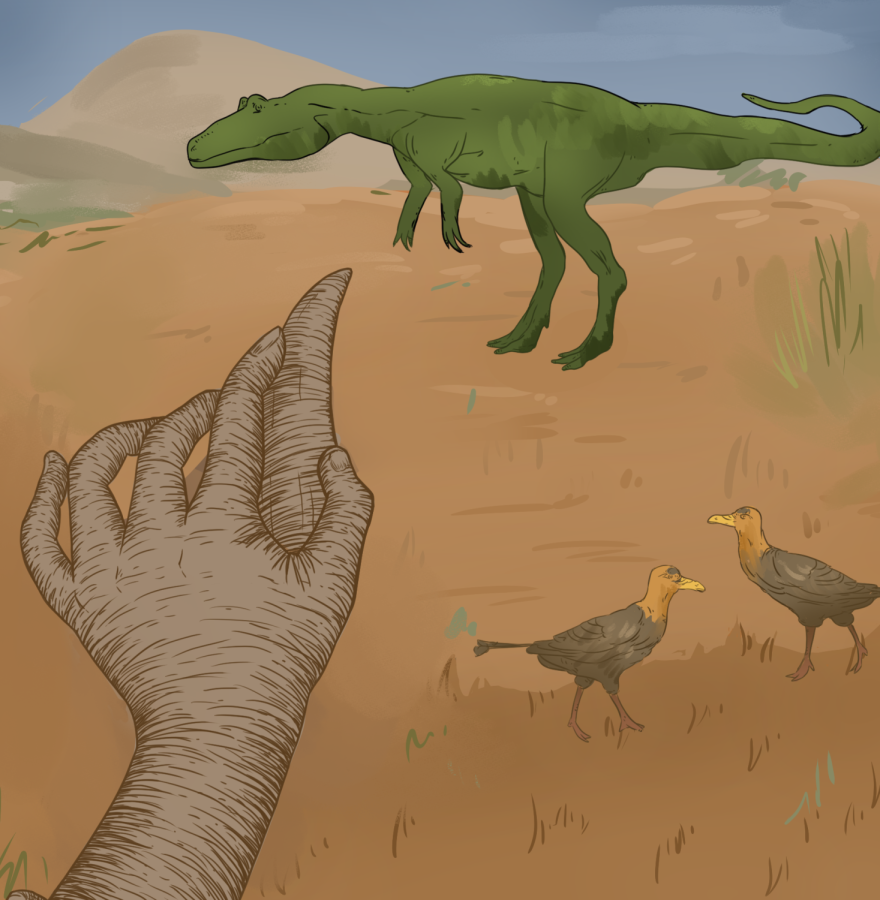UT study finds new fossil records, provides insight into dinosaur diversity of late Cretaceous period
January 25, 2023
UT researchers led a study identifying dinosaur fossils found in Patagonia, a region spanning southern Argentina and Chile, providing new insights into the period of time right before the mass extinction.
The study examined fossils of theropods, a diverse class of dinosaurs ranging from Velociraptors to Tyrannosaurus rexes. The fossils that were found provided the first record of theropods from Chilean Patagonia.
“Theropods – very generally – they’re bipedal, upright stance walkers,” lead author Sarah Davis said. “They’re mostly predatory … but then there are omnivorous theropods as well … they’re also the group of dinosaurs that we know for sure had feather coverings across the body … and then eventually gave rise to birds that we have today.”
The fossils were discovered through traditional paleontology methods and identified by comparing the bones to other fossils from that region, Davis said.
“Most of the fossils presented in this work were found by ‘picking’ or ‘prospecting’ methods, where sight and field experience are the most important tools for this,” said Roy Fernández Jiménez, a geology researcher working at the Patagonian field site. “For picking, you walk along an outcrop where fossils are being eroded out, and pay close attention to anything that looks like a piece of bone or tooth. These fossils can then be examined to determine if any more of the animal’s remains are present in the rock, and collected.”
The fossils will help scientists learn more about the late Cretaceous period, the era right before the mass extinction of all non-avian dinosaurs. Fernández Jiménez said there are a few different hypotheses as to what caused the extinction, like the consequence of an asteroid impact at what is now known as the Chicxulub crater in the Yucatán Peninsula and high volcanic activity at the Deccan Traps in Western India.
“The Late Cretaceous is commonly known as the end of the Age of Dinosaurs,” Fernández Jiménez said. “It’s important to know the effect that this produced in the Southern hemisphere and these new fossil records help us to identify the diversity of flora and fauna at these latitudes.”
Davis said the study was the first step in identifying the dinosaur diversity that existed in Patagonia. The team found a variety of bird fossils among the range of theropod remnants, with some fossils belonging to birds that became completely extinct and others from species that went on to survive.
“It’s really cool to have these groups represented at one locality and so close to when the extinction event occurred,” Davis said.
The study of the diversity of the late Cretaceous can help inform people about the flora and fauna of today, some of which adapted to survive through the mass extinction event, said Davis.
“Understanding what makes those groups able to survive these catastrophic events is important, not only for understanding their evolution, (but) potentially moving forward looking at things like climate change,” Davis said.



